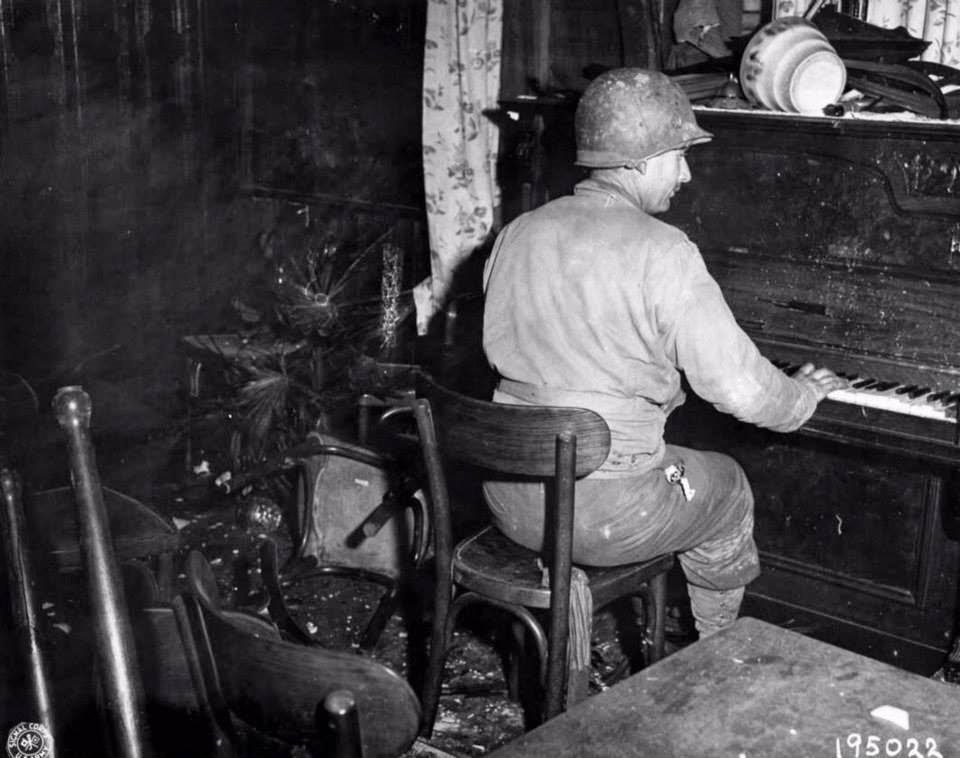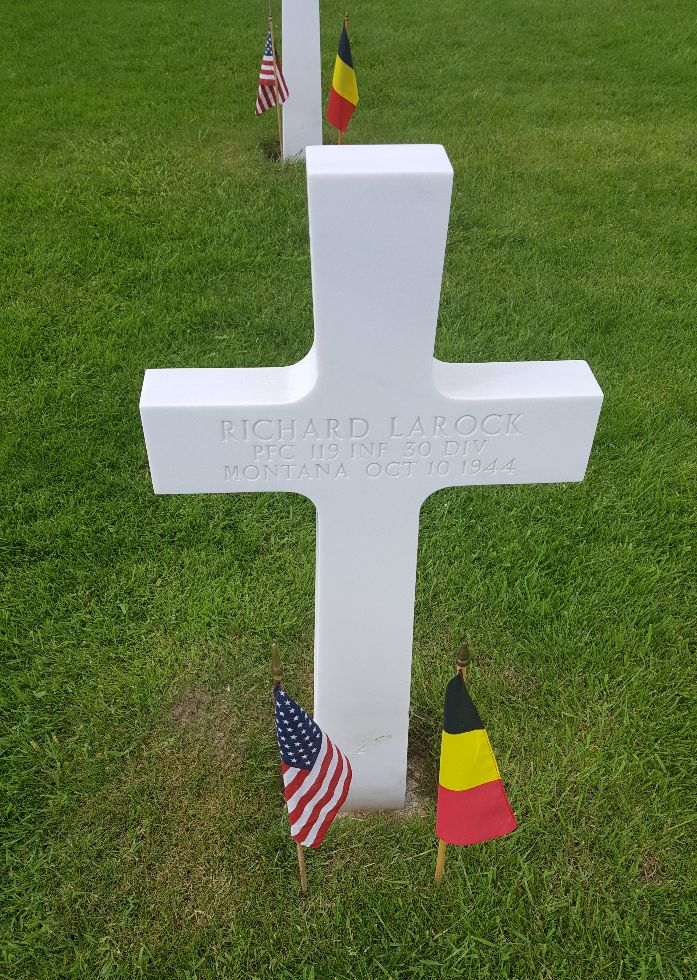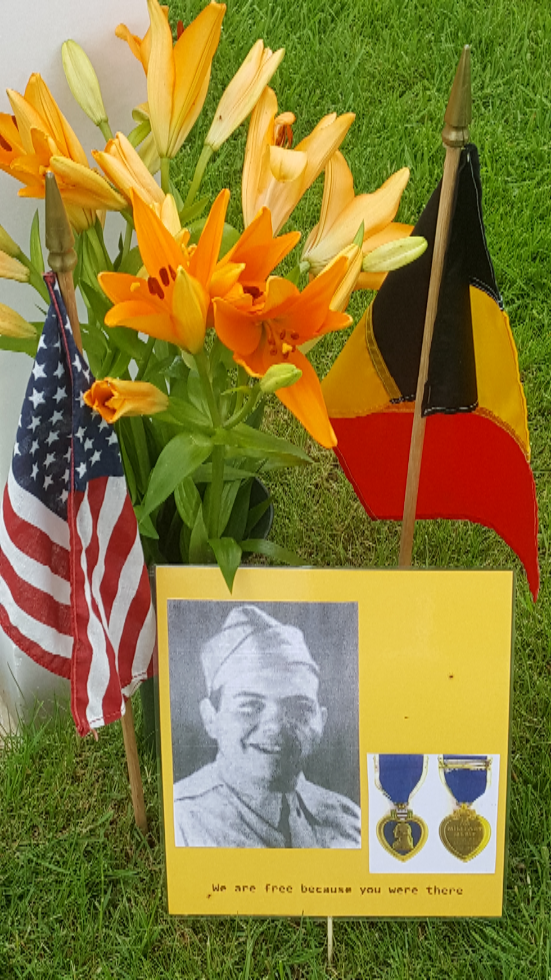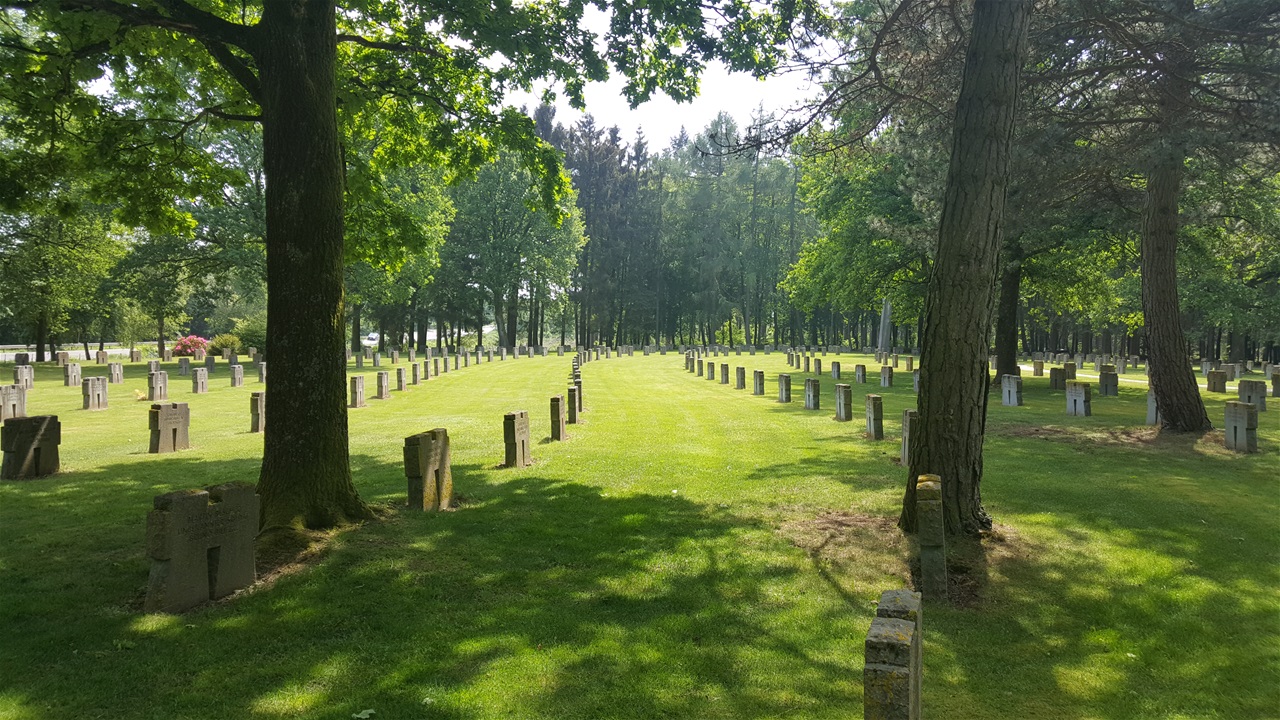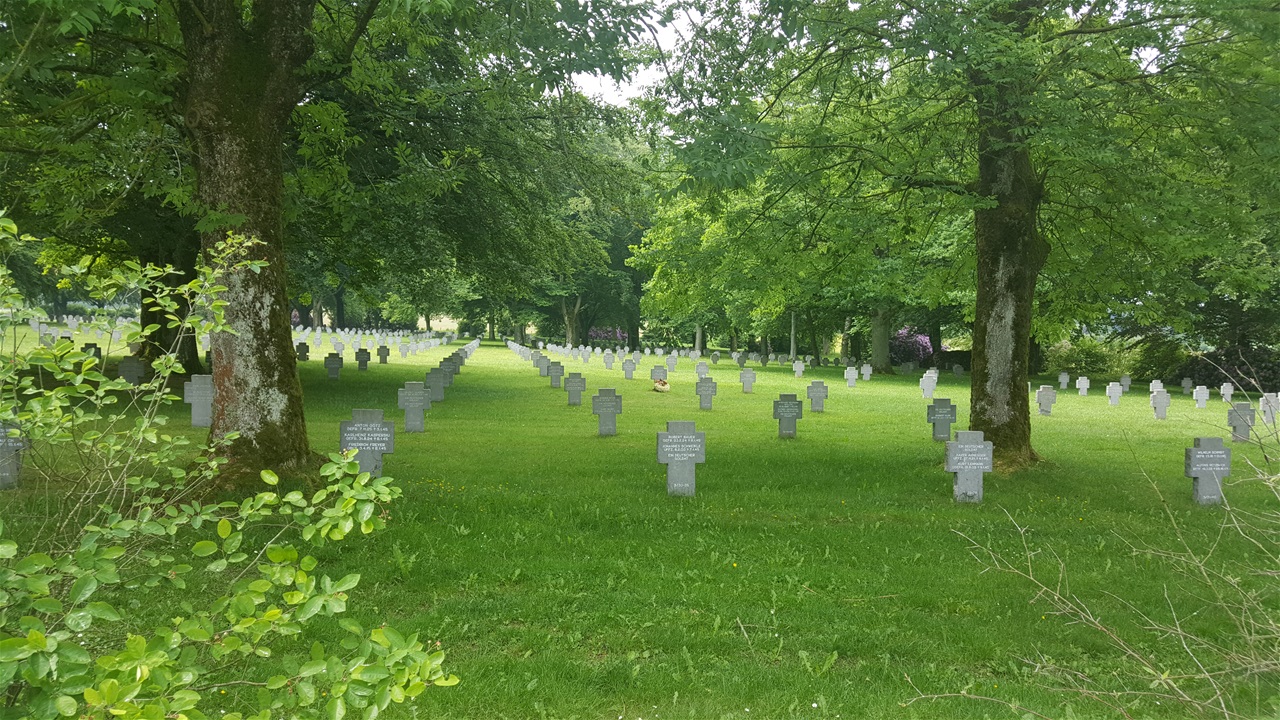Aale Savel was part of the 90th Division in the European Theatre of Operations. Nicknamed "The Tough 'Ombres'", the 90th Division had a similar war experience as the 30th. The joined the war in force after D-Day and fought across France and into Germany. One of the over 20,000 casualties of the 90th Division was Aale Savel. Aale was shot after only two weeks in Europe. On January 24, 1945, he was severely wounded by a rifle shot the hit his face, losing most of his upper jaw. Months of surgery and rehabilitation followed. The doctors and nurses did a magnificent job of reconstruction, but his wound was visible the rest of his life.
Helen and Aale were high school sweethearts, and Helen tended to Aale when he returned from the war. They were married on April 6, 1945. Aale's face was still wrapped in bandages from his wound. Nobody knew what he would look like, so there were no wedding photos. An amazing love story.
Aale and Helen returned to the Chicago area after the war. Aale had a intrepid entrepreneurial spirit and before long he owned the North Chicago Lumber Company. He built that company and his family for the next years after the war. His oldest daughter, Kay, was a standout at Michigan State and a cheerleader (still is) for the Spartans. She moved to Arizona, where she met Paul Huston. Paul and Kay fell in love and were married in Waukegan, Illinois on June 1, 1973.
Before the wedding, Aale Savel and Harold Huston met for the first time and were immediately fast friends. They talked into the night about their WW2 experience, in a conversation that all of the family wishes we could have shared. Harold and Aale were war comrades in an experience only they could really understand.
Aale and Helen lived a long and wonderful life that their children, grandchildren and great grandchildren continue.
Aale's contribution to our freedom, and his and the 90th Division's heroism should never be forgotten.
Shirley Huston's uncle, Raymond Joslin, is a famous WW2 veteran from Filer - the Twin Falls airport is named for him. He was the first WW2 airman killed in the war from the Twin Falls area. His war experience was amazing. On December 7, 1941, Raymond's squadron of bombers were on their way from the mainland to Hawaii. The radar men in Hawaii mistakenly thought the Japanese bombers and fighters on their way to decimate the American fleet was Raymond's squadron of bombers. His landing at Hawaii was under fire from both the Japanese and friendly fire from confused Americans. He survived the landing and went on to serve in the Pacific Theatre. He was killed in the Marianas later in the war.
We visited the American cemetery at Henri-Chappelle in Belgium. The intial sight of over 8,000 graves was overwhelming. As we walked through the graves, I noted one from Dad's unit, Richard Larock. Richard was also in the 30th Division, 119th Regiment from Montana. As Dad was from Glendive, Montana, it seemed especially important to note his grave. He was killed on October 8, during the major offensive into Germany at the West Wall.
Here is an article written about this soldier.
In December 1944 and January 1945, the 30th Infantry Division played a crucial role in the Battle of the Bulge. The crack outfit first helped stop in its tracks the formidable and ruthless Waffen SS force of Kampfgruppe Peiper. Then, once the northern shoulder of the Bulge was shored up, the veteran infantrymen went on the offensive themselves, fighting in blizzard conditions against determined Germans who extracted a heavy price for every yard gained. But by that time, Richard Larock, a PFC from Helena, Montana, had long stopped being part of the division’s 119th Infantry Regiment. On 8 October 1944 he was caught on film, briefly unwinding at the piano in an abandoned German beer hall in Übach, north of Aachen. Two days later, Richard Larock was killed during the fierce fighting at the West Wall on the Dutch-German border. Today, he rests at the American cemetery in Henri-Chapelle, Belgium.
We returned to Henri Chappelle cemetery a couple of weeks later and noted the grave below.
After Dad died, we went through all of his personal belongings. He had a letter from a guy that you could tell was a good friend. The letter was an APO letter sent in 1945 through the Army system. Dad said he would meet his friend in New York to celebrate the end of the war. It was returned "deceased."
Filer Idaho is a small farming community in southern Idaho, but has had a number of its residents contribute to a war effort - I thought I should mention a couple here.
Jack Ramsey was the banker at the only bank in Filer. His bank contributed to probably all the events of Filer, including the little league baseball team that many of us enjoyed growing up. It wasn't until recently that I had a conversation with Guy Ramsey (his son and my classmate) that I knew of Mr. Ramsey's contribution in WW2. Guy sent me a note: "Dad was 6th Marines, was on Okinawa April 1, and was wounded May 28th. 58 days of Hell; his words not mine." Mr. Ramsey landed on the beach and was fighting inland, when a Japanese soldier shot an American in front of Mr. Ramsey. The bullet killed that soldier, traveled on and hit Mr. Ramsey in the chest, where it was deflected out his shoulder by the bible he was carrying. He was sent stateside to recover and was on his way back to fighting when the Japanese surrendered. Here are some photos of the battle: https://www.pennlive.com/nation-world/2019/06/battle-of-okinawa-was-one-of-bloodiest-of-world-war-ii-vintage-photos.html
Another soldier in another war, Vietnam, was Mike Hadley. Mike is the older brother of another classmate of mine, Steve Hadley. Mike was sent to Vietnam and served with valor and honor.
Another soldier in Vietnam was Danny Aslett, an older brother of Dick Aslett, a classmate of mine. Danny volunteered for service in Vietnam and was granted a medical deferment, which he refused. He ended up as a forward observer, one of the most dangerous jobs in the service. He served two terms in a very difficult war. Upon returning home, he was killed in a head on collision with his uncle.

